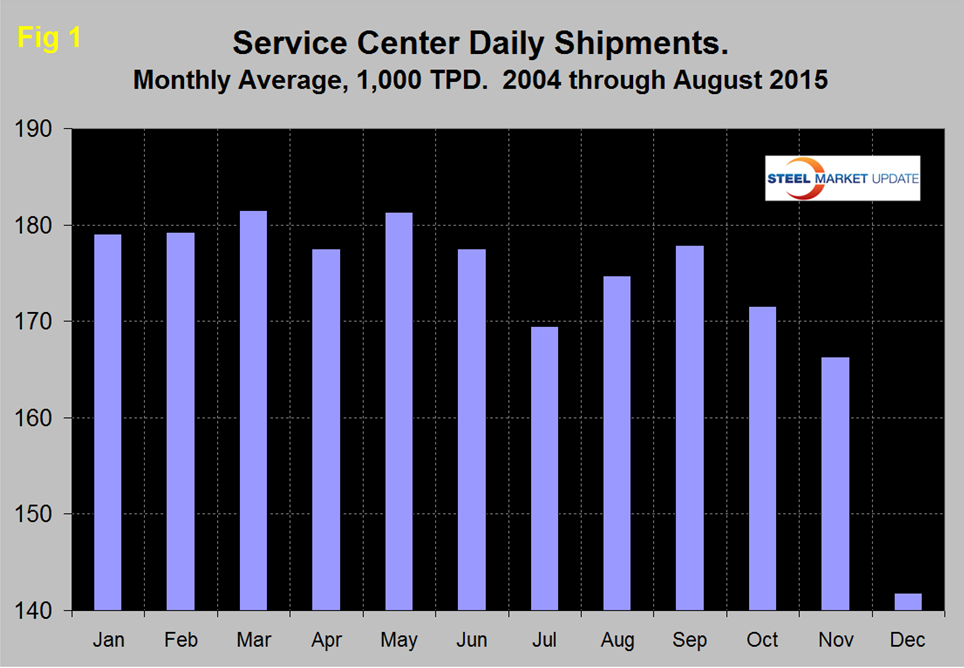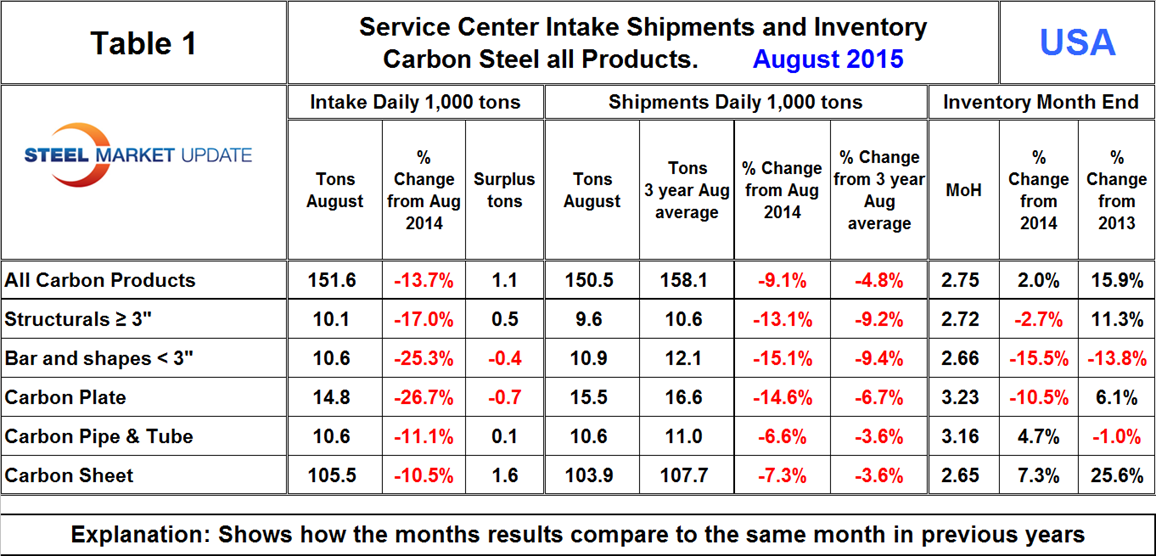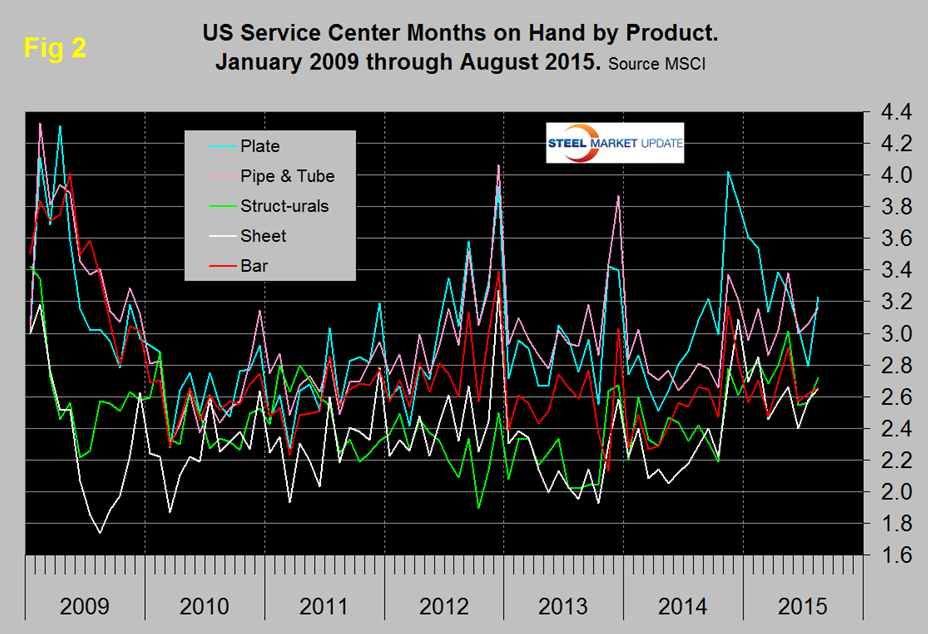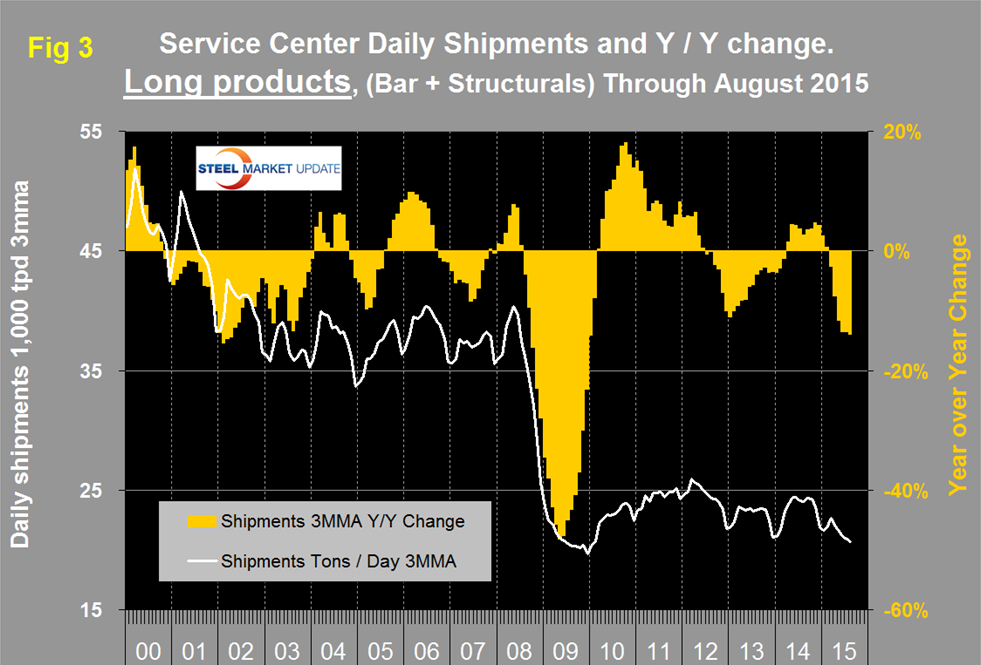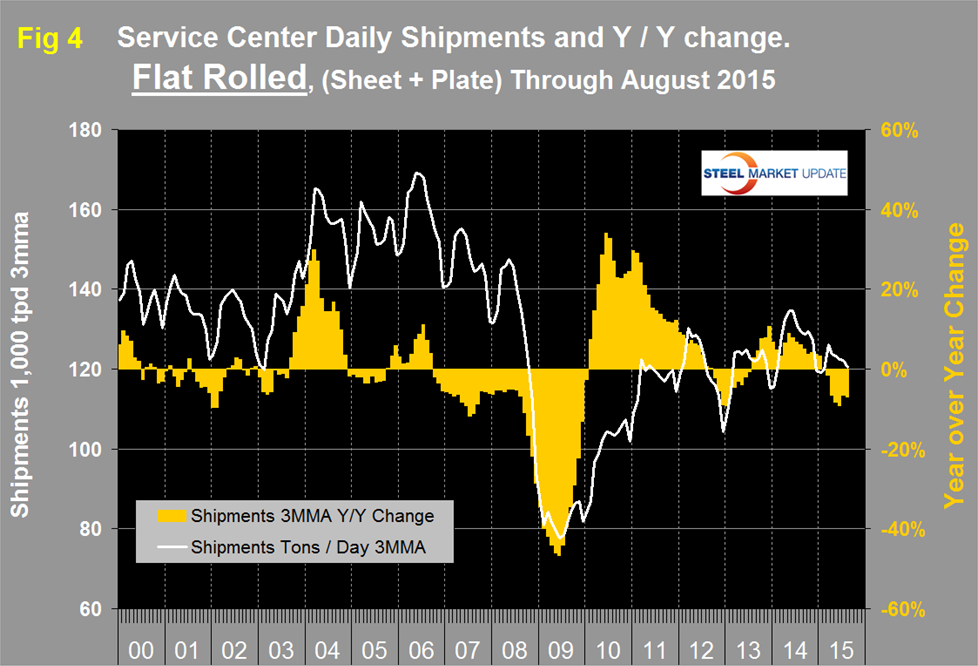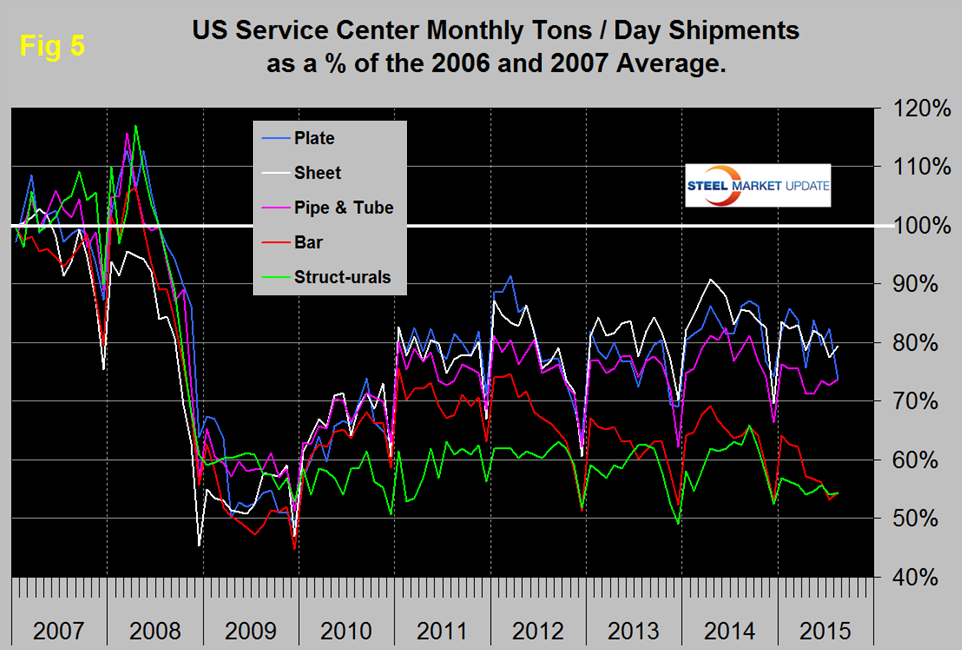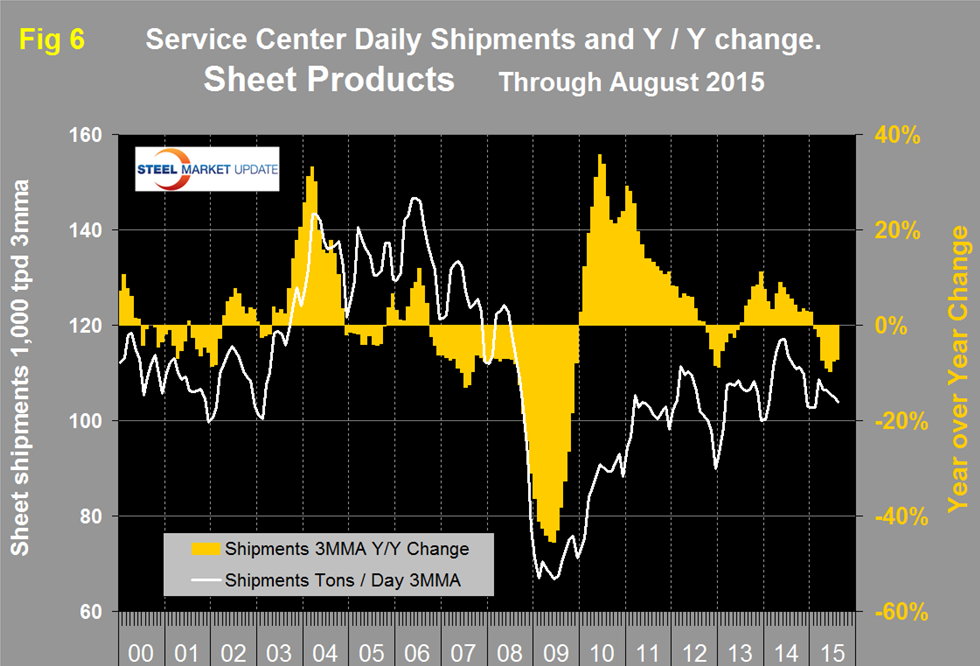Market Segment

September 21, 2015
Service Center Intake, Shipments and Inventory through August 2015
Written by Peter Wright
Based on Steel Market Update (SMU) analysis of the recently released MSCI service center inventory and shipment data, total service center carbon steel shipments decreased by 126,600 tons in August to 3.160 million tons. Shipping days at 21, were down one from July. On a tons per day basis (t/d) shipments increased from 149,400 tons in July to 150,500 tons in August.
![]()
In the twelve years since 2004 August shipments on average have been up by 3.1 percent from July, this year shipments were up by 2.9 percent. Therefore on a long term basis (12 years), the August performance compared to July was pretty much normal. This observation is only intended to give a long term perspective because MSCI data is extremely seasonal and we need to get past that before commenting in detail on current results. Figure 1 demonstrates this seasonality and why comparing a month’s performance with the previous month is usually misleading.
In the SMU analysis we always consider year over year changes to eliminate seasonality. Table 1 shows the performance by product in August compared to the same month last year and also with the average t/d for August in the last three years.
We then calculate the percent change between August 2015 and August 2014 and with the 3 year August average. We hope this gives an undistorted view of market direction. In August intake at 151,600 tons was 1,100 tons more than shipments. This was the second month of surplus intake following five straight months of deficit. The intake surplus was driven almost entirely by sheet products for which the surplus was 1,600 tons, all others being more or less a wash. Compared to last August, intake was down by 13.7 percent overall and all product groups were down by double digits.
Shipments of all products on a t/d basis were down by 9.1 percent from August last year and were 4.8 percent less than the average August shipments for 2015, 2014 and 2013. The fact that the single month y/y growth comparison is worse than the three year comparison is an indication that momentum is negative and growth is slowing. Shipments of all products were down year over year and on year/3 years on a t/d basis. Shipments of long products and plate were particularly hard hit.
August closed with months on hand (MoH) of 2.75, up from 2.64 at the end of July and up from 2.45 at the end of August last year. Structurals, bars and plate had a y/y inventory decrease and sheet and tubulars had an inventory increase. Figure 2 shows the MoH by product monthly since January 2009. Plate has had a particularly strong inventory decline since the end of last year but bounced back in August.
There continues to be a wide difference between the performances of flat rolled (sheet + plate) and long products (structurals + bar) at the service center level. Long products have had a very poor recovery from the recession. On a 3MMA basis y/y, the growth of shipments was negative for 21 straight months until April last year which was the first of eleven months of growth. However in March on a y/y basis shipment growth returned to negative territory at -2.6 percent followed by April at -7.6 percent, May at -11.6 percent, June at -13.5, July at -13.5 percent and August at -13.9 percent (Figure 3).
Considering the improving construction statistics, we have no explanation for this recent dismal long product performance. Flat rolled has had a much better recovery since mid-2009 and had positive y/y growth for 18 straight months through January this year. In February growth slowed to zero, in March came in at negative 1.6 percent followed by April at -6.6 percent, May at -8.3 percent, June at -9.1, July at -6.6 percent and August at -7.0 percent (Figure 4).
In 2006 and 2007, the mills and service centers were operating at maximum capacity. Figure 5 takes the shipments by product since that time frame and indexes them to the average for 2006 and 2007 in order to measure the extent to which service center shipments of each product have recovered.
Again it can be seen that bar and structurals have the worst record. Sheet and plate have had the best recovery since the recession followed by tubulars. Even so the recovery of sheet is only at 79.3 percent and plate at 73.8 percent. The total of carbon steel products is now at 70.9 percent of the shipping rate that existed in 2006 and 2007, with structurals and bar at 54.3 percent and 54.5 percent respectively.
MSCI uses product nomenclature flat and plate. In this analysis at SMU we replace the term flat with sheet. By our interpretation of the MSCI’s data their definition of “flat” is all hot rolled, cold rolled and coated sheet products. Since most of our readers are sheet oriented we have removed plate from Figure 4 to highlight the history of sheet products which are shown in Figure 6.
Following the strong post-recession recovery, sheet products experienced 9 months of decline from October 2012 through June 2013. This was followed by eighteen months of growth through January this year but February slipped back into negative territory at -0.7 percent year over year, the March result was -2.3 percent followed by April at -7.3 percent, May at -9.1 percent, June at -9.8 percent, July at -7.6 percent and August at -7.2 percent.
SMU Comment: We have commented in other reports that data like this can be spun in a variety of ways to such an extent that it’s possible to draw opposite conclusions. This is commonplace in the reporting of MSCI data by different analysts. We recommend that readers flick through the charts that we provide and draw their own conclusions. Ours is that inventories in general are up from last year even though intake is down. Shipments for all product groups on a tons per day basis are down year over year. Figures 3, 4 and 6 show that there has been a distinctly negative shift in shipment growth for all products in 2015. This analysis is in general agreement with our reports of total supply to the market which is based on AISI shipment and import data. Total supply of hot rolled products was down in February through July (latest month available) compared to the last three quarters of 2014.
The SMU data base contains many more product specific charts than can be shown in this brief review. For each product we have ten year charts for shipments, intake, inventory tonnage and months on hand. Some readers have requested these extra charts for a particular product and others are welcome to do so.



